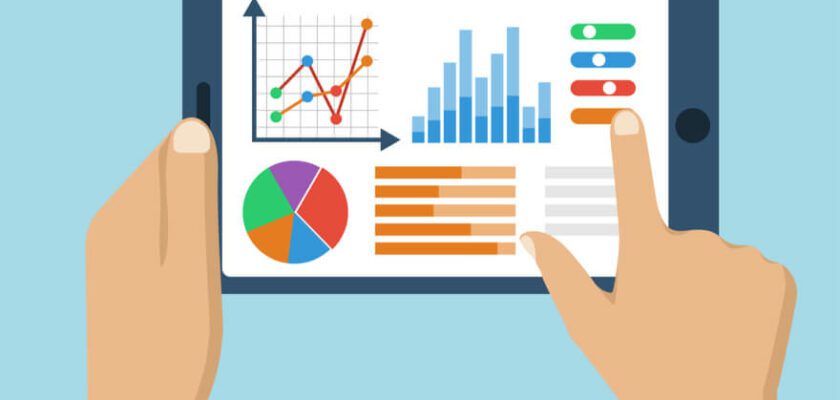Table of Contents
- 1 What does Brand Analytics (ABA) mean on Amazon?
- 2 Who can use Brand Analytics Amazon?
- 3
- 4 How to access Amazon Seller Brand Analytics?
- 5 Five metrics to check in your Amazon Brand Analytics
- 6 What about the Brand Dashboard in Brand Analytics Amazon (ABA)?
- 7 How to benefit from Amazon Brand Analytics for your brand?
 Amazon has been striving to bring as many companies as possible to its platform. For this, it has granted sellers who participate in Amazon Brand Registry a powerful reporting and conversion share analytics tool. It helps traders to access various programs like Sponsored Brand Advertising, A+ Content, and tools to protect their intellectual property.
Amazon has been striving to bring as many companies as possible to its platform. For this, it has granted sellers who participate in Amazon Brand Registry a powerful reporting and conversion share analytics tool. It helps traders to access various programs like Sponsored Brand Advertising, A+ Content, and tools to protect their intellectual property.
Brand Analytics is one of the most useful yet overlooked options of the Brand Registry. So, in this article, we will provide insights on recent updates in the world of Amazon retail analytics as well as outline crucial metrics you should be tracking for your brand.
What does Brand Analytics (ABA) mean on Amazon?
To put it short, Brand Analytics is a Brand Registry feature for Amazon Seller and Vendor Central. It provides essential data that helps owners to make informed decisions about their product portfolio and promotional or advertising activities.
Who can use Brand Analytics Amazon?
If you wish to benefit from the feature, you need to meet a number of criteria set by Amazon:
- Be a brand owner
- Be a member of Amazon Brand Registry
- Sell your branded products on Amazon
- Your brand has an active registered trademark
How to access Amazon Seller Brand Analytics?
To start using the Brand Analytics feature, do the following:
Go to your Seller Central or Vendor Central account on Amazon ⇒ Visit the ‘Reports’ tab from the main bar ⇒ Click ‘Brand Analytics’ located in the pull-down menu ⇒ After you select ‘Brand Analytics,’ feel free to start learning how to use your brand analytics.
Five metrics to check in your Amazon Brand Analytics
Keep reading to understand what data the Brand Analytics reports share and how best you can utilize them to boost your Amazon performance!
Amazon Search Terms
Such an indicator discloses how Amazon users noticed your items by gathering search keywords that led shoppers to your product listings. This assessment also focuses on the search frequency rank, click share, and conversions your goods reached for specific searches.
Check Amazon Search Terms report to:
- Monitor keyword research
- Find out which keywords lead to the greatest share of product sales
- Identify which keywords account for the most clicks on your listings
- Discover new keywords to use for targeting your items
- Strengthen your Amazon product listing optimization and advertising campaigns.
Repeat Purchase Behavior
This Amazon Brand Analytics (ABA) data shows statistics of repeated purchases of your goods by Amazon customers. Here, you can check the following information for a listing and a certain period in the dashboard. This includes purchases (both first-time and repeat), unique shoppers(both first-time and repeat), and repeated purchases. This report also displays the number of repeated purchases as a monetary value for you to quickly calculate the financial impact of such orders.
Benefit from the Repeat Purchase Behavior listings to:
- Examine the influence that the repeated purchases have on your revenue
- Check which goods lead to the most repeated purchases
- Think about how to make more repeated purchases with SEO or advertising tools.
Important tip: Amazon remarketing advertising campaigns are a great way to generate repeated purchases of your goods.
Market Basket Analysis
Market Basket Analysis provides valuable insights on the other products users tend to purchase. The information you can check in the report section for a certain item within a certain period includes the following: ASIN, title, and product combination rate. The first two indicators usually include a numerical label. For example, the second product users buy most together with your items will be marked ‘#2 Purchased ASIN’
Feel free to check Market Basket Analysis to:
- Stop market options to launch a new listing.
- Update advertising targeting with the goods most often bought with yours.
- Identify which items to combine as a bundle.
Even if you don’t want to expand and launch new items, try using Market Basket Analysis to develop more efficient promo campaigns. As a result, it drives more leads and reaches a better return on the spent advertising budget.
Item Comparison and Alternate Purchase Behavior
Such a report provides insights on the top three units offered by competitors, the Amazon users compared and bought instead of yours. This data also reveals how often your goods get compared to those top three units.
Let’s check how to reference the Item Comparison and Alternate Purchase Behavior statistics:
- Analyze competing goods.
- Develop advertising campaigns to compete with products of competitors.
- Enhance the descriptions of your product listings to outperform the competitor’s unique selling points.
Item Comparison and Alternate Purchase Behavior are two of the most important reports provided by Brand Analytics Amazon. Utilize this information to supersede competitors with both pay-per-click (PPC) and search engine optimization (SEO).
Demographics
Amazon Brand Analytics demographic findings will help your brand recognize who buys your products by providing demographic information. It includes gender, age, education, household income, and marital status
How to use Amazon Brand Analytics demographic data?
- Boost your buyer image.
- Improve your advertising targeting configuration.
- Communicate your future developments of goods.
To get the most benefit, it’s required to check the Demographics data quarterly. A quarter by quarter period will give you more information. Besides, it will help you put together more actionable insights when it comes to your buyer image and advertising targeting.
What about the Brand Dashboard in Brand Analytics Amazon (ABA)?
The five reports mentioned above are extremely insightful. However, with Amazon Brand Analytics (ABA), there is also the Brand Dashboard available to check, including but not limited to:
- Goods with five and fewer testimonials
- Items without the required detail page options
- Goods that require A+ Content
- Items with no Sponsored Product Ads
- Goods that got a three and less-star review
- Items with underutilized search terms
You can find your Brand Analytics Dashboard in the account of Seller Central or Vendor Central. For this:
Log in to your Seller Central Amazon or Vendor Central Amazon profile ⇒ Click ‘Performance’ on the main tab ⇒ Choose ‘Brand Dashboard’ in the pull-down menu ⇒ Here you go. Now you can enable and view the necessary notifications!
How to benefit from Amazon Brand Analytics for your brand?
Many successful brands utilize these tools to find out potential areas for improvement, adapt their marketing strategy, and monitor potential customer issues. Keeping track of your brand analytics and of how your company is perceived on the Amazon market is essential to be successful for a long time. For this, you are free to employ additional tools aimed to bring your customer service to a new level and boost your revenue.
For instance, SageMailer has done a tremendous job when it comes to developing a useful review tool admired by its users. Thanks to its powerful mix of features, for example, feedback management and communication with customers, it remains one of the best feedback request programs on Amazon. So why not give it a try right now?


